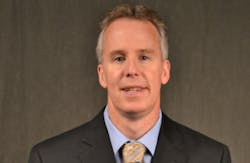NSF explores untraditional standard development
NSF International is currently developing a new draft standard on emerging contaminants: NSF 401: Drinking Water Treatment Units — Emerging Compounds/Incidental Contaminants, which will establish requirements designed to reduce emerging compounds. The standard will focus on claims being made for the reduction of 15 individual compounds.
Water Technology caught up with NSF International’s Rick Andrew, director of global business development, water systems to find out why these contaminants are of immediate concern for municipal water supplies, what goes into creating a new NSF standard and how this standard will evolve as new contaminants of concern emerge. Below is an excerpt of that interview.
WT: Which emerging contaminants do NSF standards currently in development cover?
RA: NSF standards currently in development actually cover 15 different compounds which were selected based on having been detected in a source water or a drinking water supply somewhere. They were selected based on manufacturers having interest in testing their products to see if they can treat these compounds effectively. And, they were also selected based on the capability of laboratories to analyze for those compounds.
WT: What harm do these contaminants pose?
RA: They are present or they are being detected in source water and drinking water at very low concentrations — parts per trillion levels. It is really based on a consumer preference. Consumers would prefer to not have these compounds in their water if they can treat the water in many cases.
WT: Are there technologies out there to address all of these contaminants?
RA: Active media treatment, typically activated carbon, is likely to be effective. The second one is reverse osmosis. There are other technologies that may be effective in treating these emerging compounds and incidental contaminants. Typically, they are a little more complex like ozone treatment.
WT: As new technologies and research come out addressing these emerging contaminants, will there be a framework in place for adding to the standard?
RA: Yes. There are actually thousands of these compounds that have been detected in source water or drinking water. The standard itself provides a definite framework for the addition of more compounds in the future as there is interest on the consumer side or the manufacturer side in terms of doing that.
Be sure to read the entire interview with Andrew in the June issue of Water Technology.
This interview is also available in audio form on www.WaterTechOnline.com/podcasts.
